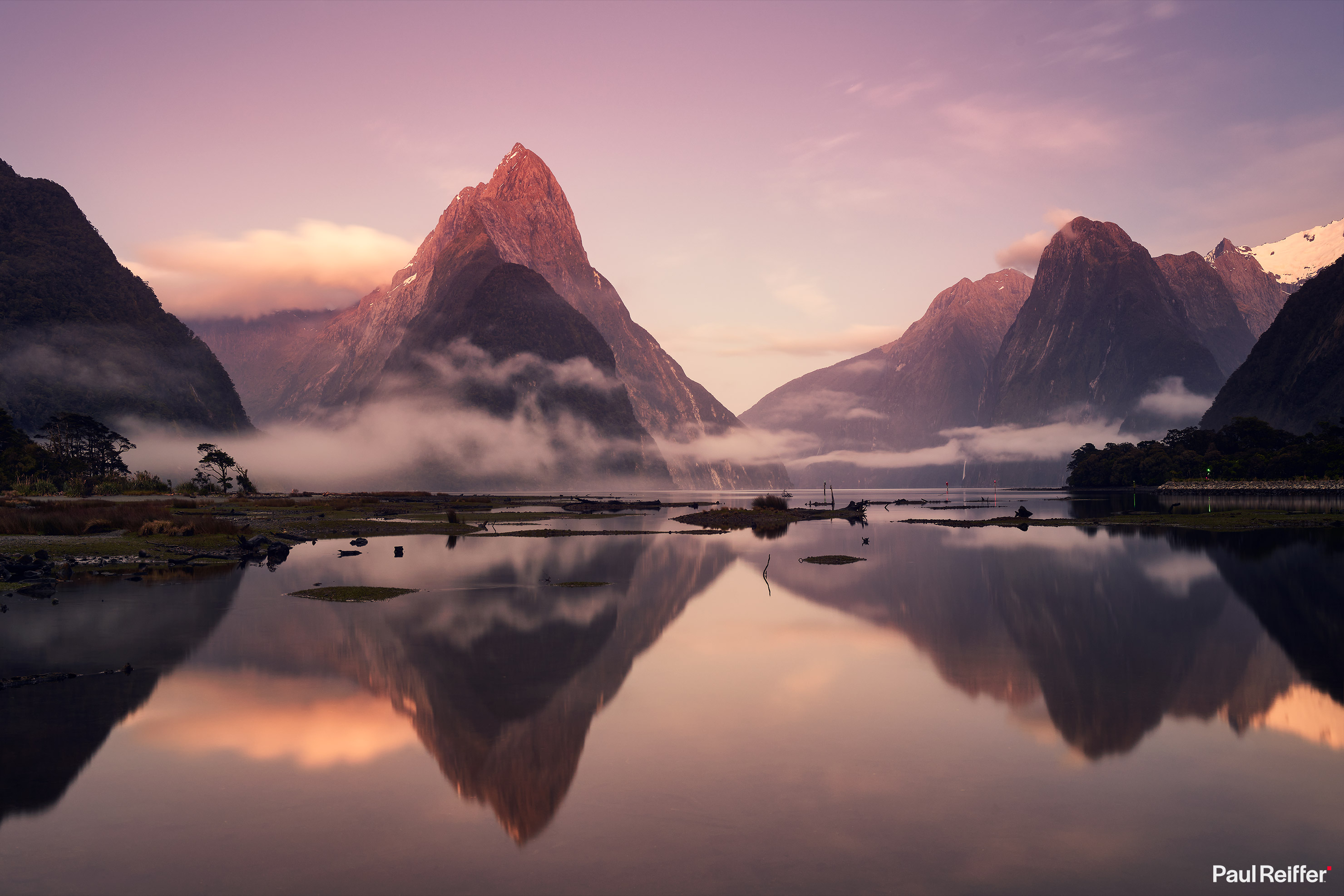Standing tall and majestic in New Zealand’s Fiordland National Park, the peaks that surround Milford Sound can capture light in truly magnificent ways, all through the year.
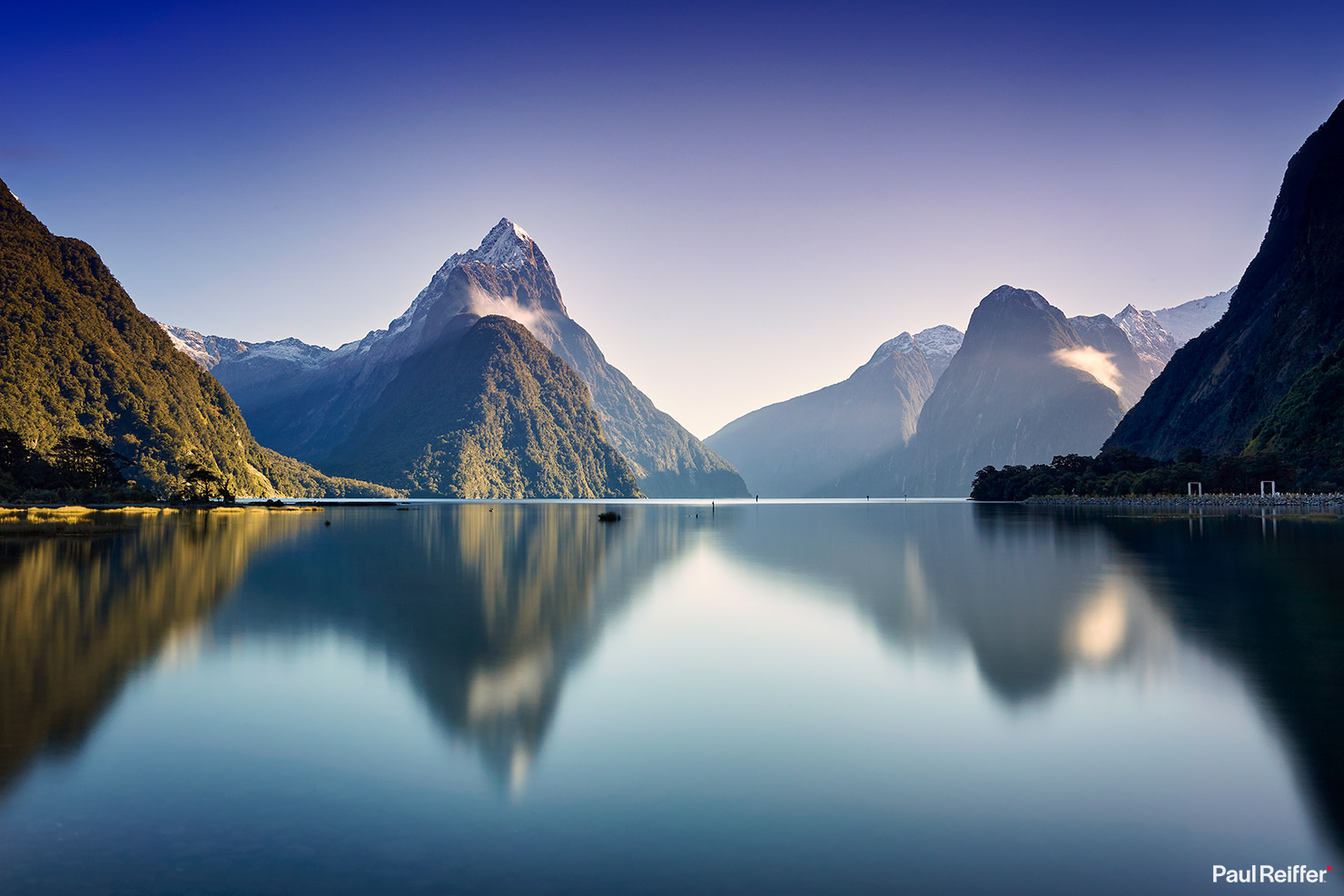
Whether it’s the deep, misty haze that each morning can bring, or the final rays of sunlight on a spring afternoon, there’s something special about this iconic view that just keeps pulling me back to visit time and time again.

They say the journey is often just as valuable as the destination – and nowhere could this be more true than in driving along Highway 94 from Te Anau in New Zealand’s southern island to Milford Sount itself. Flanked by huge glacier-carved mountains, pristine lakes and rivers and just the right mix of snow and greenery, this is one of the most scenic routes you can take in your life.
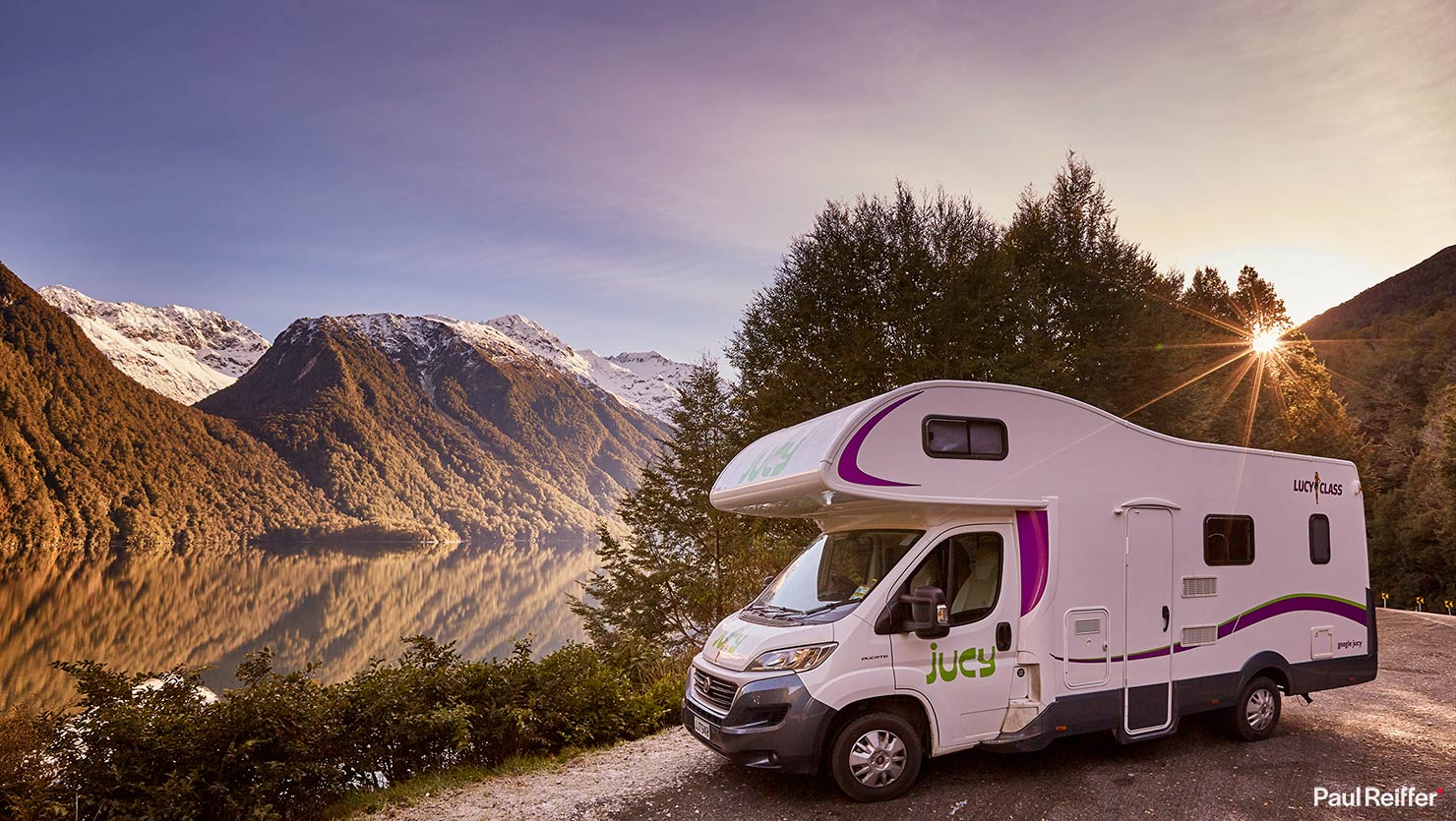
While only a little over 100km, this is a drive that can take several hours if you “do it right” – stopping off to see the cascading waterfalls, reflections in the clear mountain lakes, or even to enjoy some of the local wildlife.
Of course, this includes the friendly Kea, a bird that rather amusingly loves to eat rubber from cars left by their owners while they go off trekking. I say amusingly – it is until you notice that one has taken a particular liking to the flavour of rubber on your own car’s roof liner, aerial, windscreen wipers, and so on…

(Hint: Be careful with the Keas!)
Arriving into the basin and harbour area of Milford Sound itself, on my very first trip down there I must admit to initially having a small sense of disappointment that afternoon.
Yes, there were the grand mountains laid out before us, from Mitre Peak in the distant left to the giant drop of Bowen Falls flowing into the Sound below to the right. But there was also some rough weather, and flat light to contend with.

…until sunset, that was.
I quickly learned – Milford Sound (and the whole of Fiordland National Park, for that matter) has a weather system unlike any I’d visited before. In a single day, you could experience what felt like all four seasons in one go.
Clouds which had hung around for hours suddenly gave way to the final rays of sunlight as they bounced around and reached through from the coast out in the distance.

And that’s what delivered one of my favourite looks of Milford Sound.
Why a Sound, and not a Fjord, you might ask?
Side note: While both have been filled with seawater (their resultant carvings into the surrounding rocks being lower than sea level), a Fjord is typically narrower, and formed by ancient rivers of glacial ice whereas a Sound is wider, normally the result of a river valley being flooded.
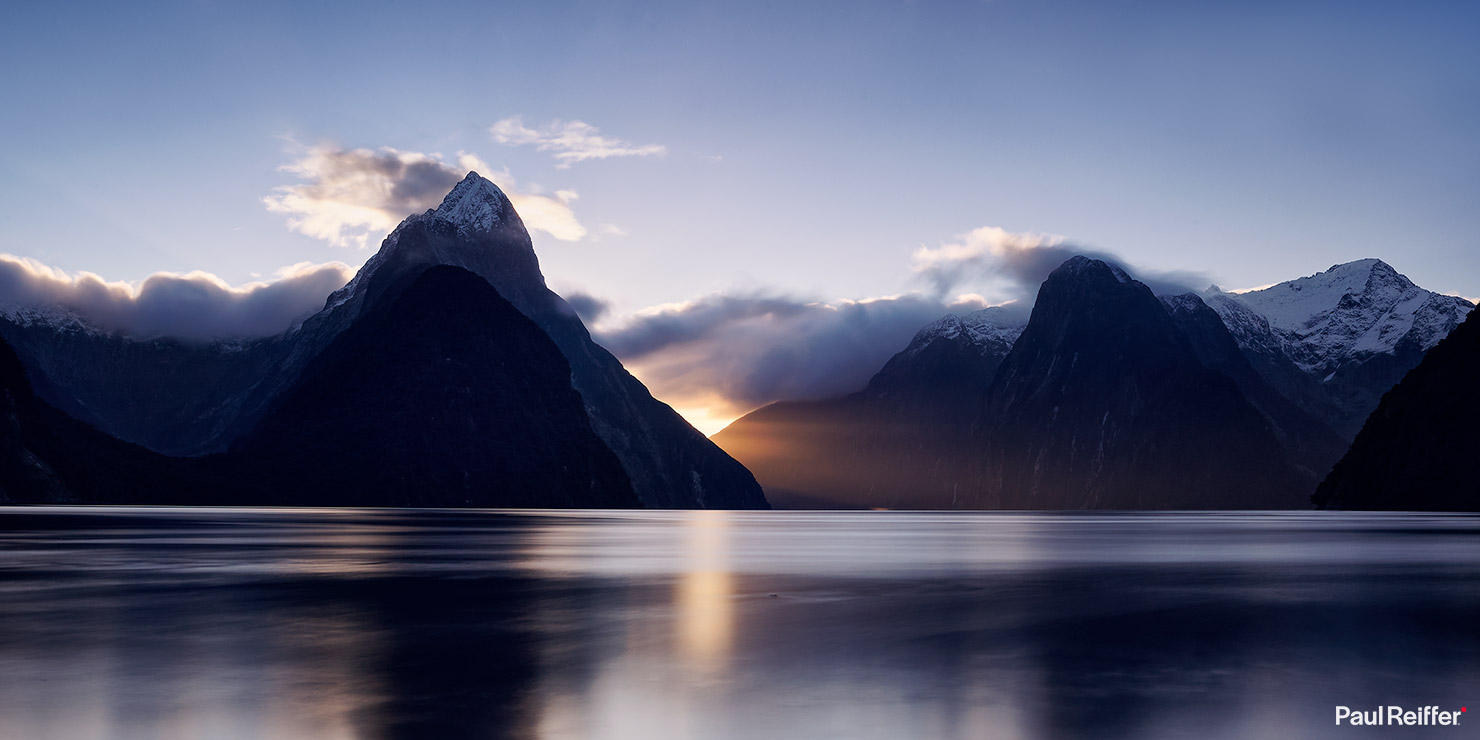
But those rays, that seemed to last for hours, that was when the magic hit – and just as rapidly as they appeared, the clouds backed away, to leave a completely clear sky for them to illuminate the mountains around us.
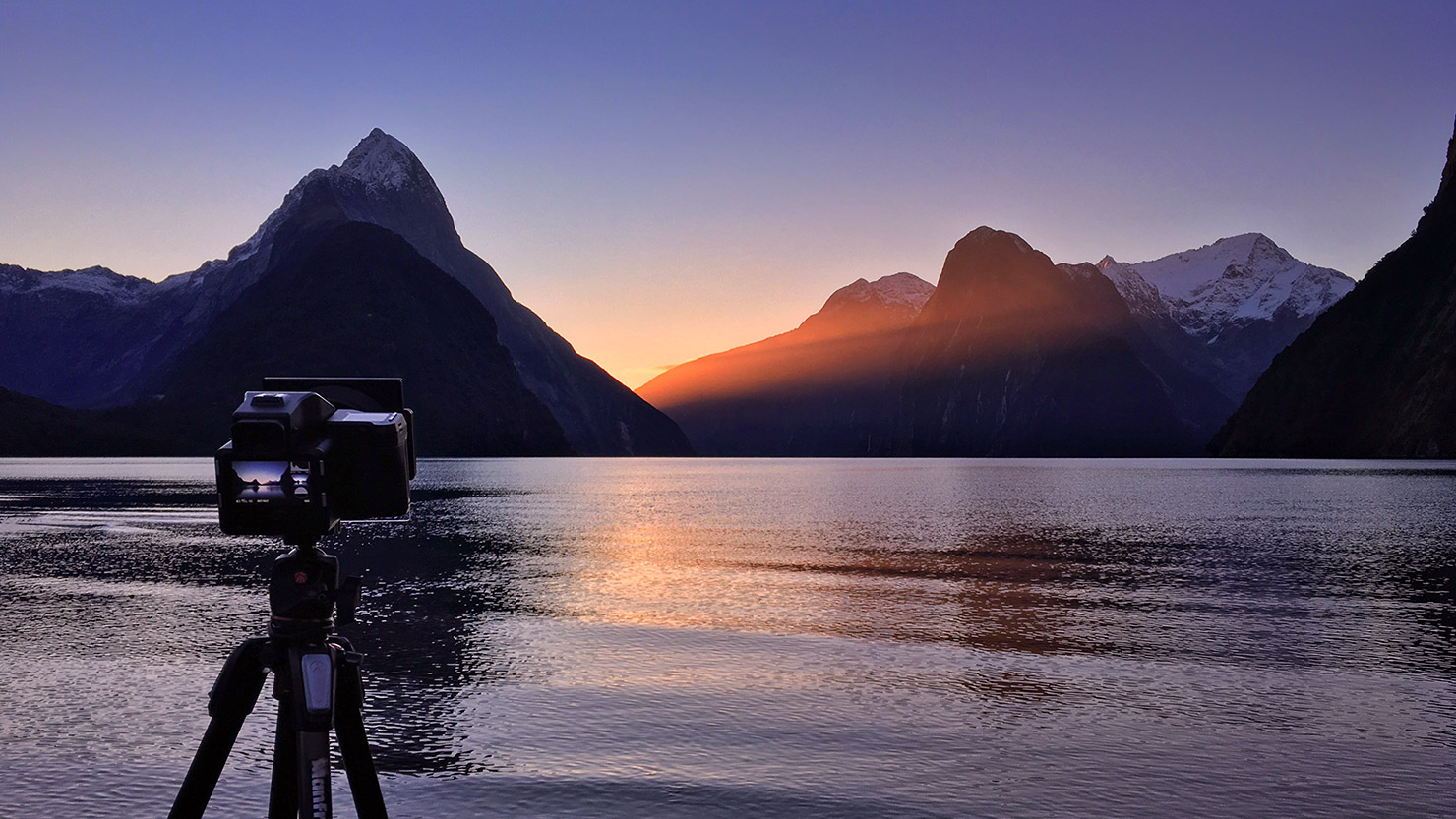
It can be difficult controlling your exposure here, with most graduated filters relying on a straight line transition – the introduction of all those peaks along the horizon can cause some issues with levels. That said, using the full dynamic range of the camera, as well as being happy with a few dark shadows for depth in the image meant I came away with photographs I was really happy with that day.
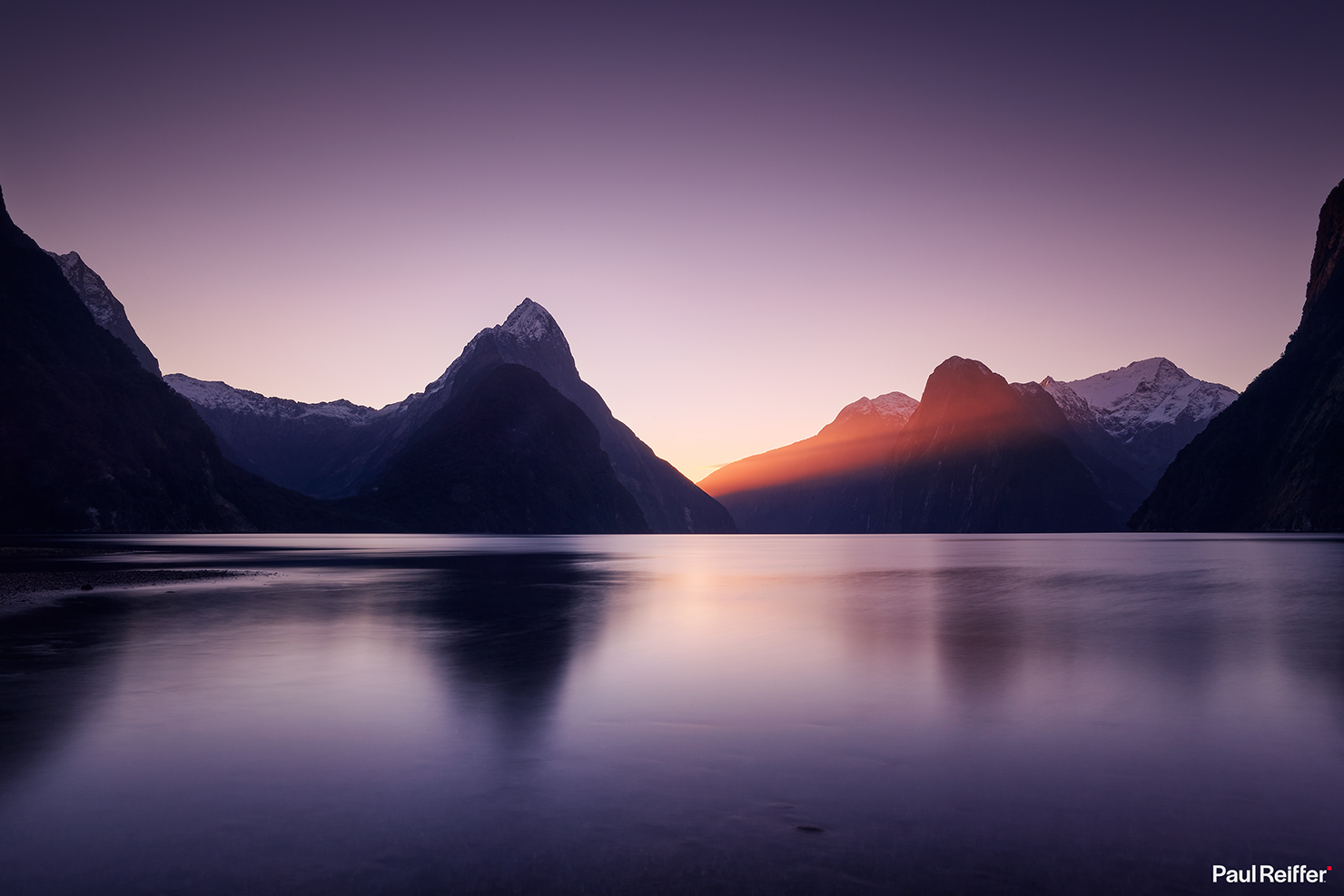
But that day wouldn’t be enough – with such a clear sky before us, it was the night that was worth exploring too, especially during “Milky Way season”…
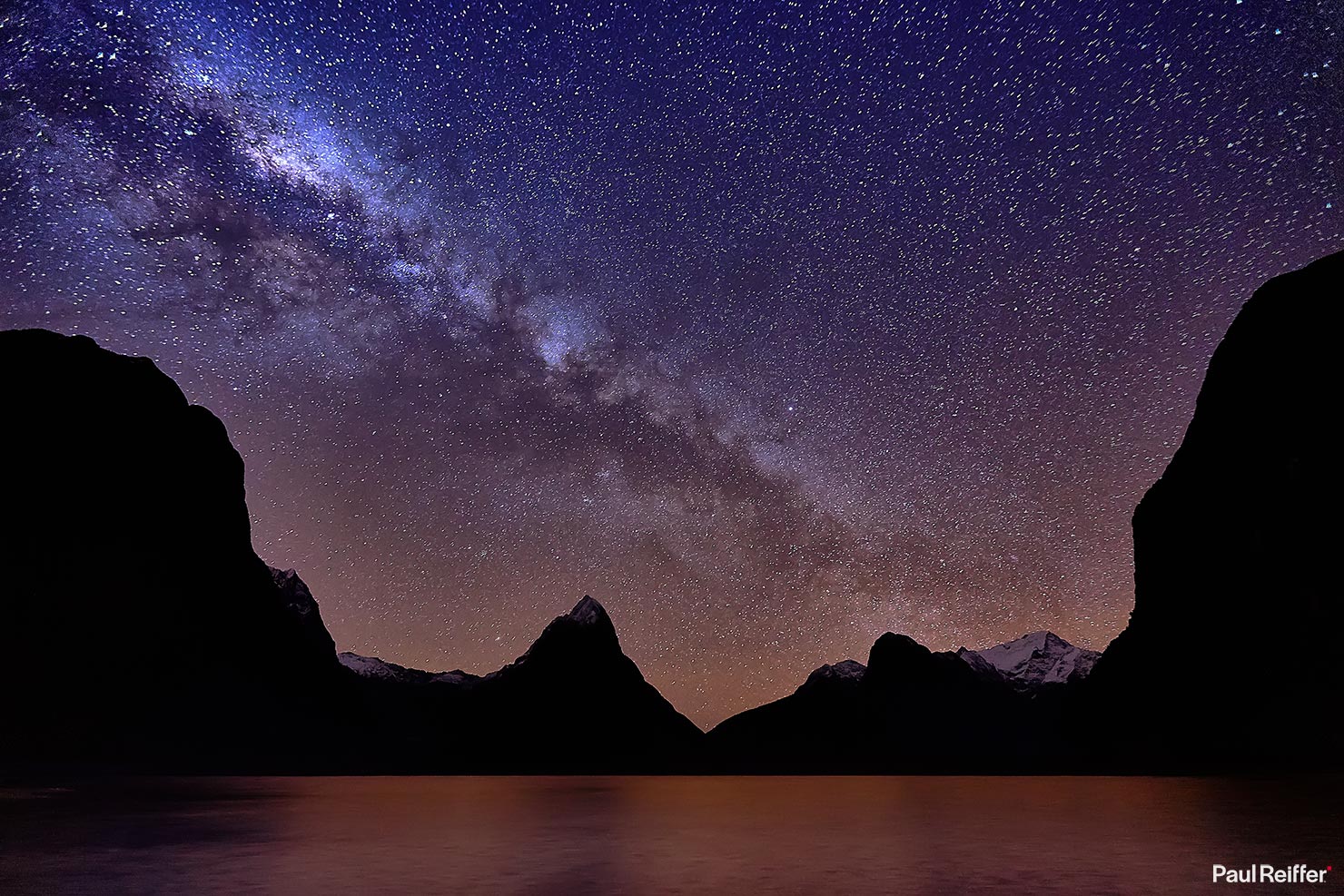
Oftentimes, when shooting the stars, our camera can capture far more than our eyes can see – usually due to the negative effects of the surrounding light pollution.
But the only light here was the (very) faint, distant, glow of the sun that had set a few hours before – the rest was clear and plain for the eye to see above – shooting stars and all.
Luckily, I’d recently learned a trick from a few hundred thousand people on Instagram when it came to making the stars appear even brighter on camera. You see, if you put a head torch on and point up at the sky, you can clearly increase the amount of light coming from the Milky Way above – in any location around the world…
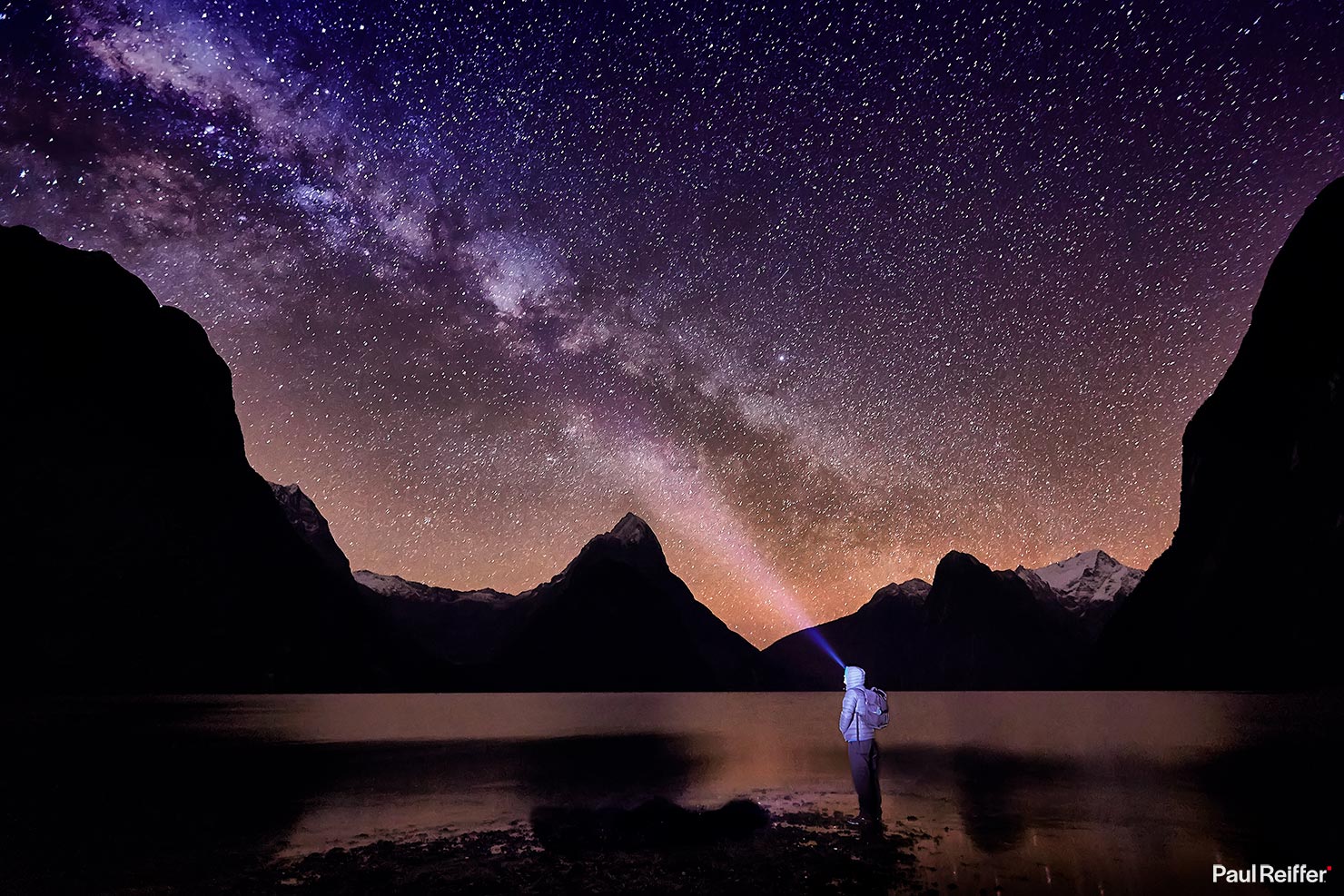
…well, apparently that’s what we’re supposed to believe anyway! (No, I’m not serious, before we get those emails.)
A new dawn, a new day, a new trip, and Milford Sound was looking mighty fine in the summertime.

Surrounded by blue skies, it was the first (and only) time I’ve stepped foot on one of their tourist boats.
While the ability to explore the water all the way out to the coast was a welcome change, the “experience” of being crammed onto a boat overflowing with selfie sticks and packed lunches means I will never do so again.
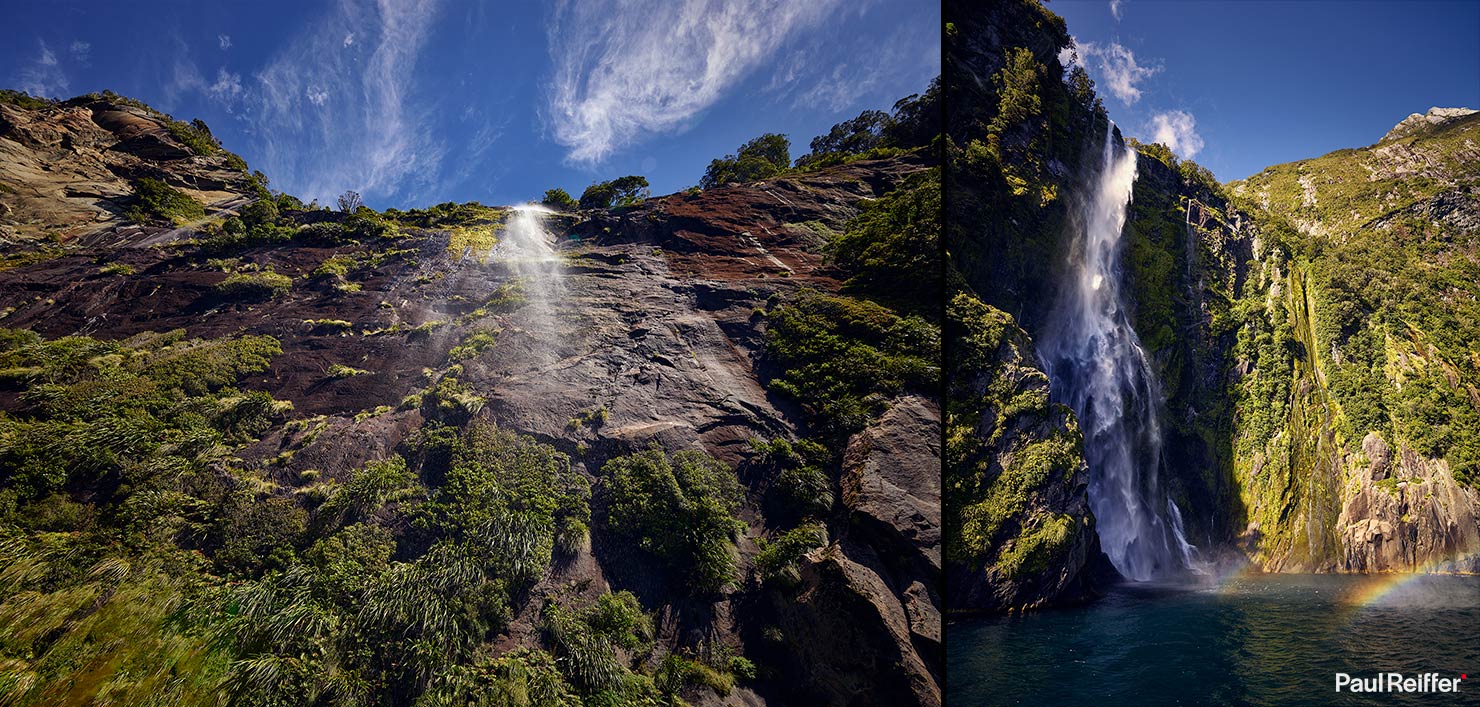
Still, we did at least get to see the waterfalls from below…
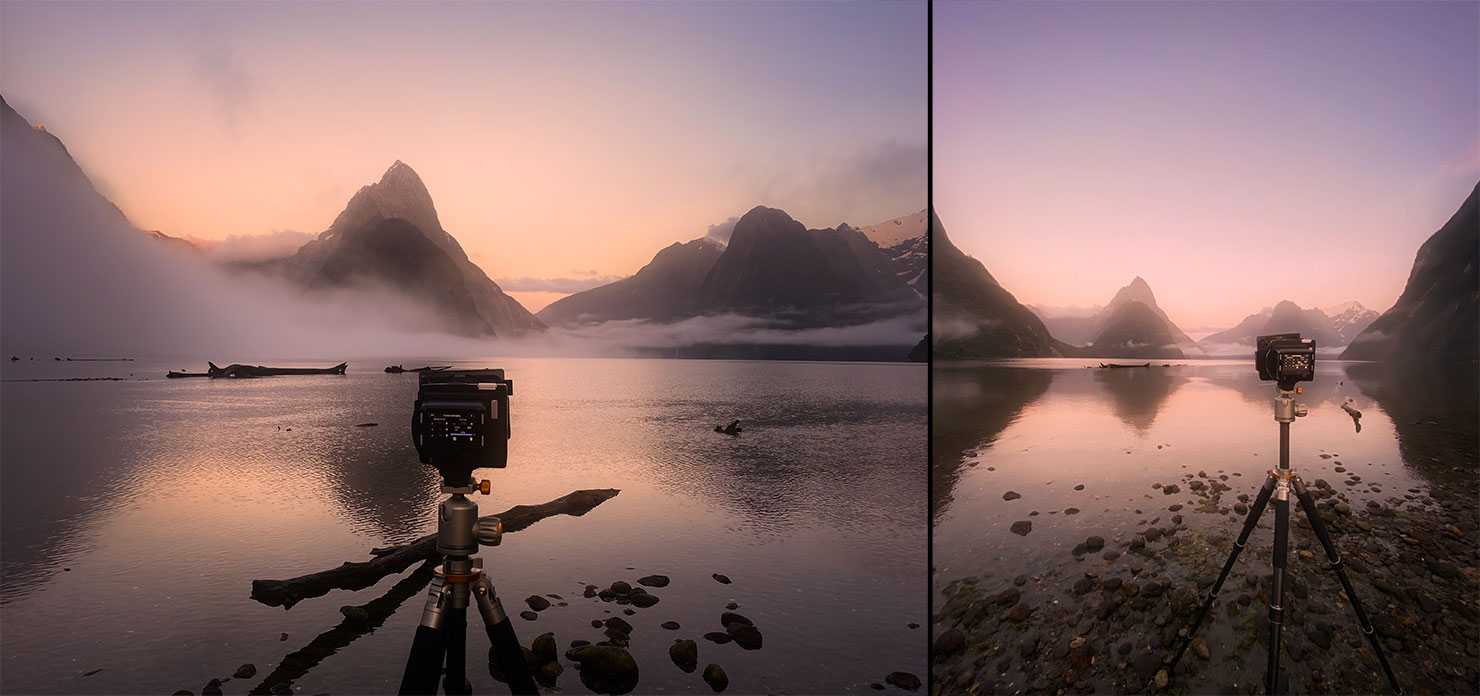
For me, however, it’s the “beach” area of the Sound that keeps calling.
With such diversity of images depending on the light, the tide, the wind, the sky, the time of year – it’s the view that continues to deliver, over and over again.
The early morning mist during a peak tide at sunrise made this image into the perfect reflection:
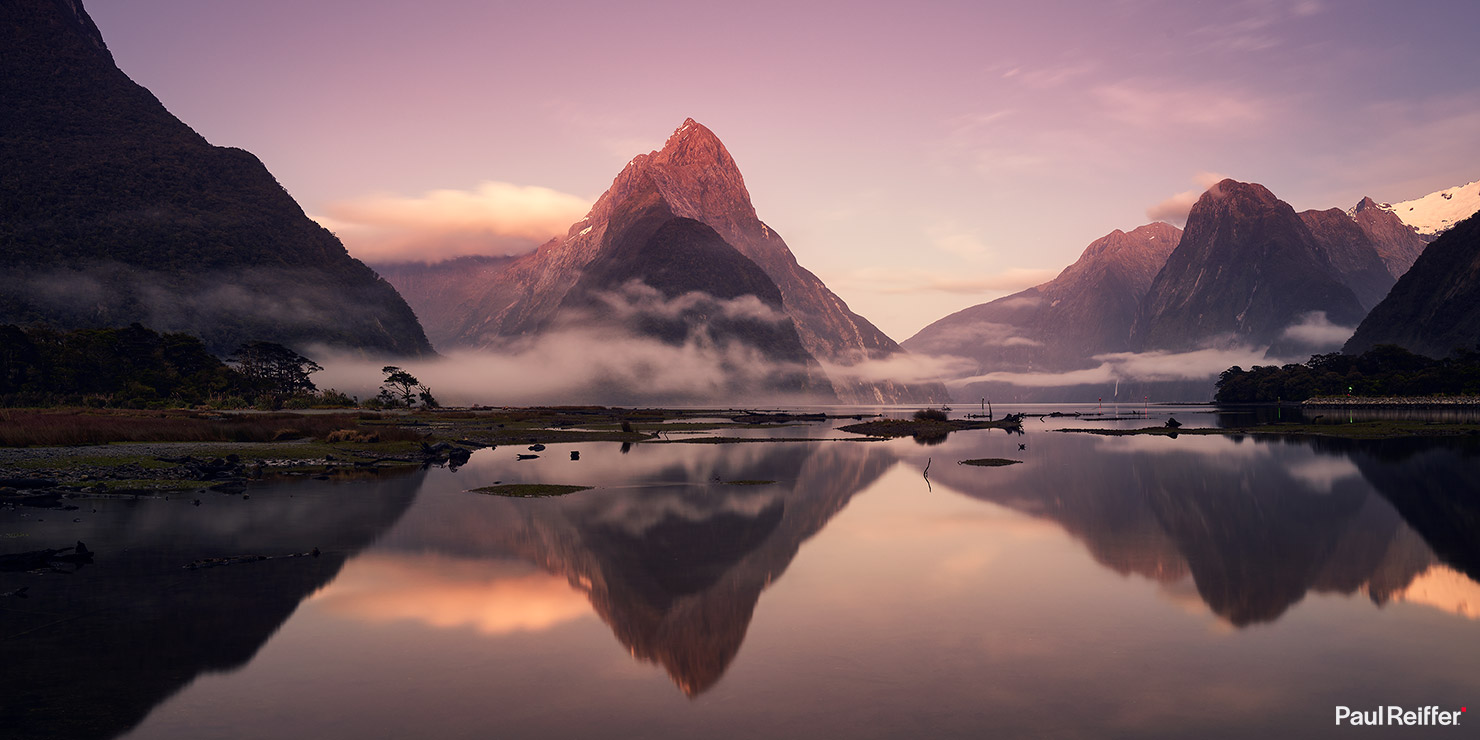
Waiting a little longer and following the tidal line as it retreated revealed some beached driftwood logs that sit there each day, giving me some foreground elements to place against the misty landscape beyond.
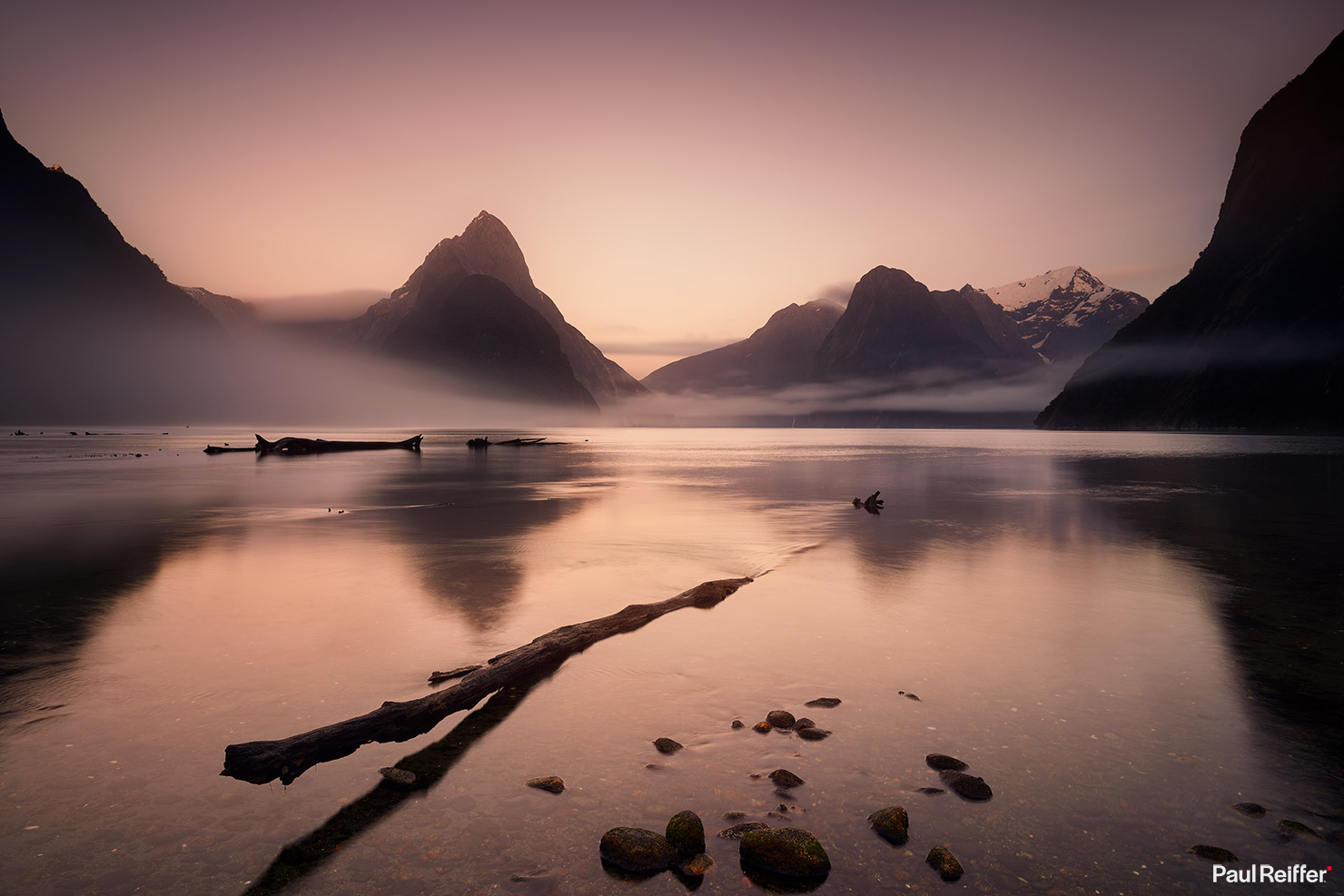
And to see how quickly the tide changes the scenery here – these are two images taken from roughly the same spot, one at high tide, and one just as it had retreated back to the ocean.
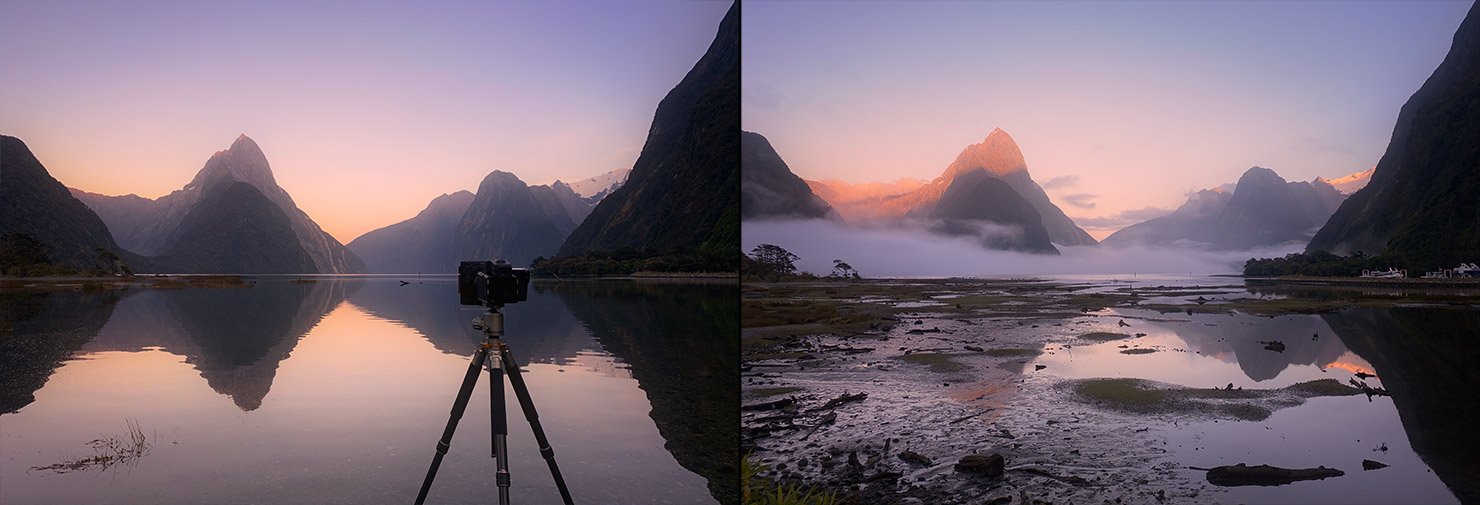
Of course, it’s the low tide that people in the know are most afraid of at Milford Sound – as this is the time when the sand flies come out to party.
They love exploring cameras, tripods, filters, inside of bags, inside of coats, inside of t-shirts and even inside of underwear if they can find a way – at best providing annoyance, at worst, some rather “interesting” bites.
And in all my years of visiting this place (along with all the discussions I’ve had with locals), I’m yet to find the definitive answer to the problem when shooting down there at low tide in the summer – other than “don’t”.
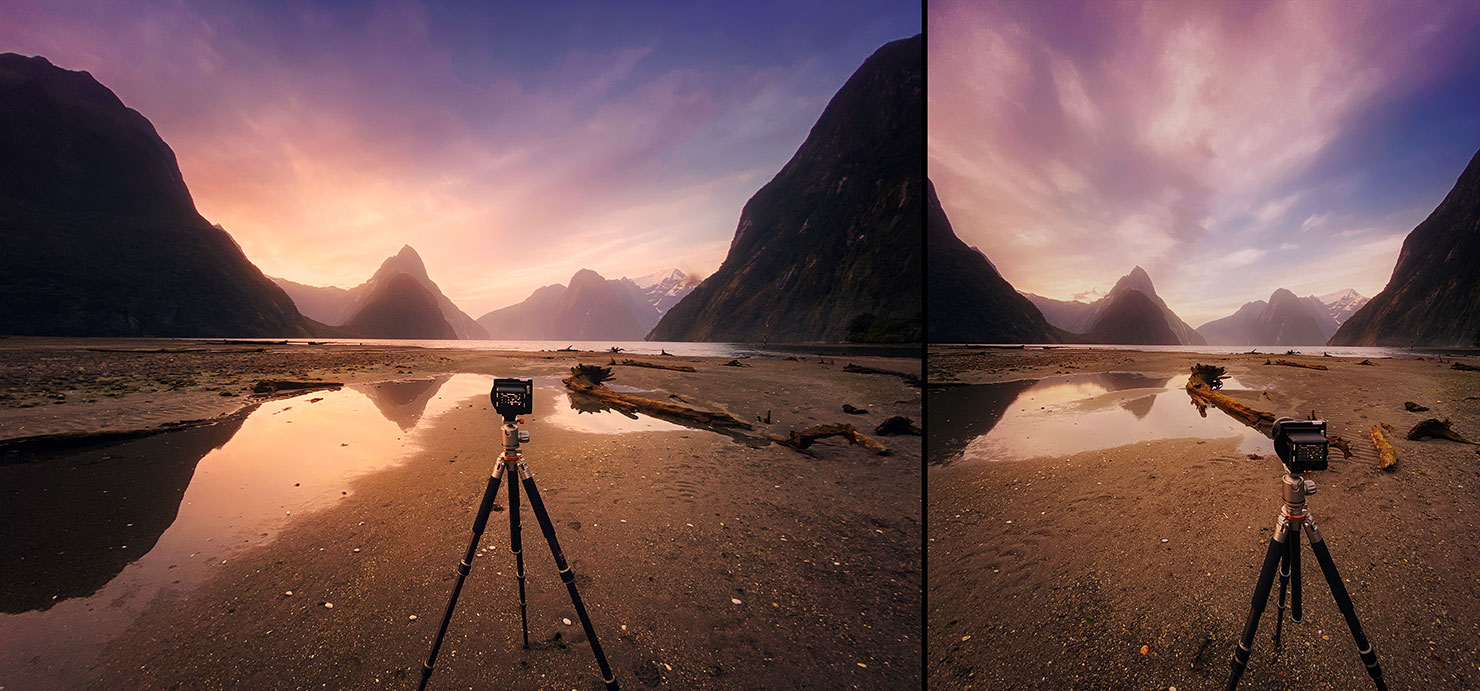
Despite the airborne distractions causing chaos to all around, sunset with a low tide is a perfect time to find a reflection pool and maybe some other foreground features – especially when the sky isn’t hugely dramatic by itself.
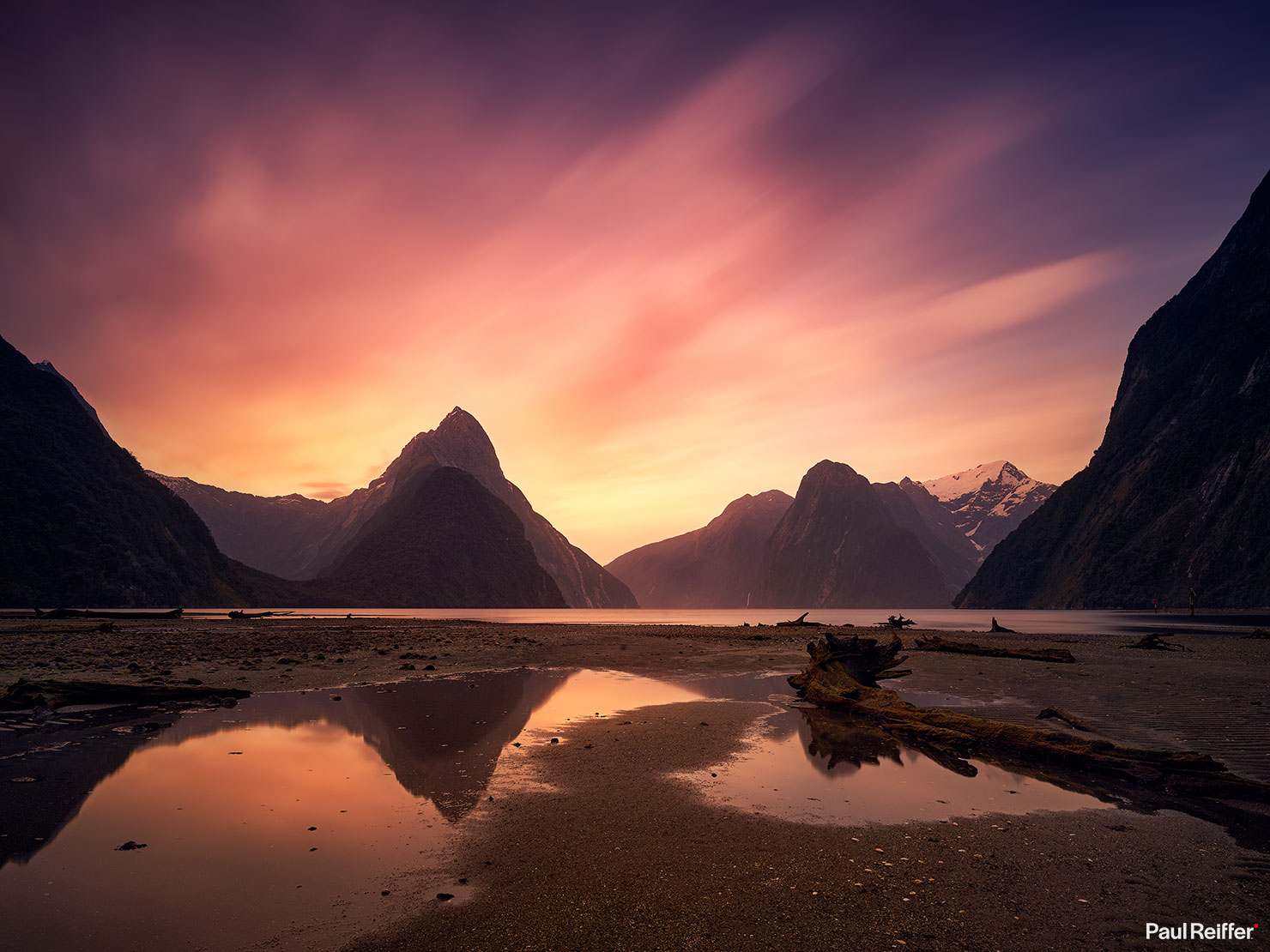
You have to be quick though, as these pools don’t last for long – the water drains away at quite some speed once the tide has turned.

But then, even without the reflections, or the foreground of an ancient tree trunk, a good old fashioned long exposure can still record the explosion of pastel colours in the sky over the mountains ahead just after the sun hits the horizon.
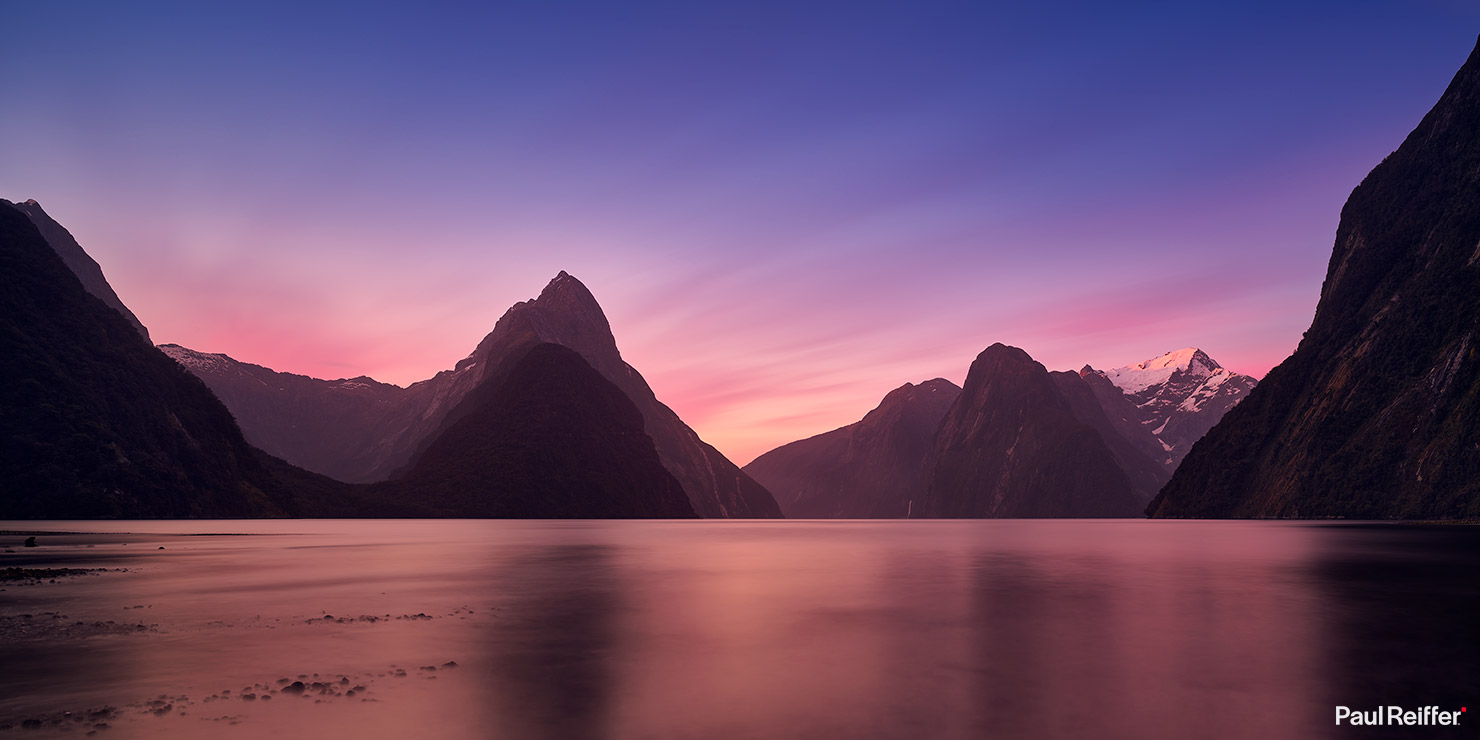
And let’s not forget – if it’s texture we’re looking to capture, without the distractions of colour getting in the way, a smooth achromatic/black and white shot can always be relied upon to get the mood of a place just right.
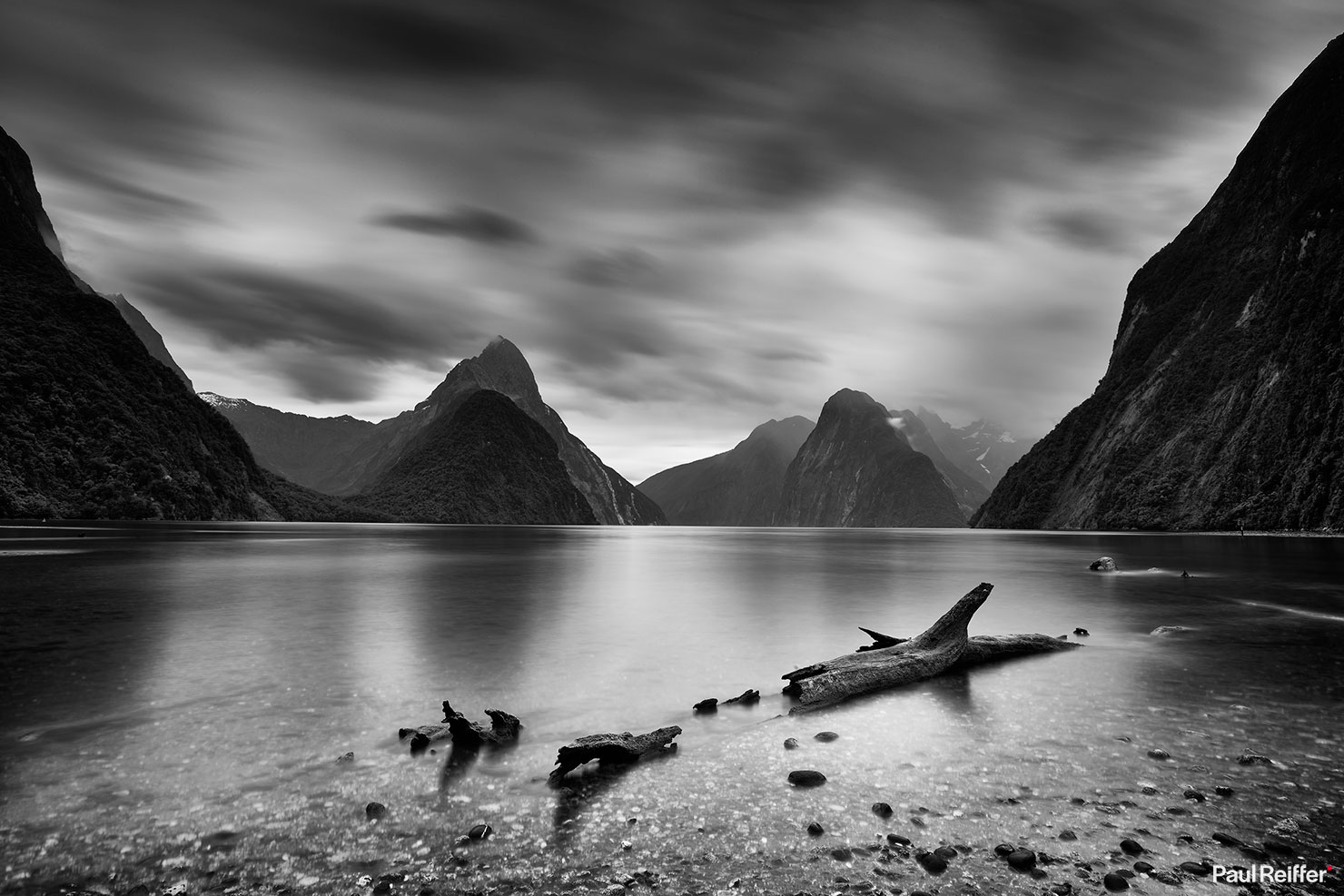
So what about some tips for visiting?
It’s along way to get to Milford Sound from the nearest International Airport – Queenstown, and many elect to take a day trip by bus.
My advice? Don’t.
You won’t get enough time there, it’s effectively a school trip routine, and you’ll miss all of the best light.
You can fly down, taking a scenic tour (which is a great way to see the area from a different angle), but unless stopping overnight you’ll have the same issues with missing the best of the light on the water.
It can be expensive to stay in Milford Sound itself (although, I must admit it’s quite nice to come back to a riverside cabin at night!). So, instead, you can opt for a campervan (and park in the campsite there) or some even choose to stay in Te Anau and drive the 1.5 hours straight in each day.
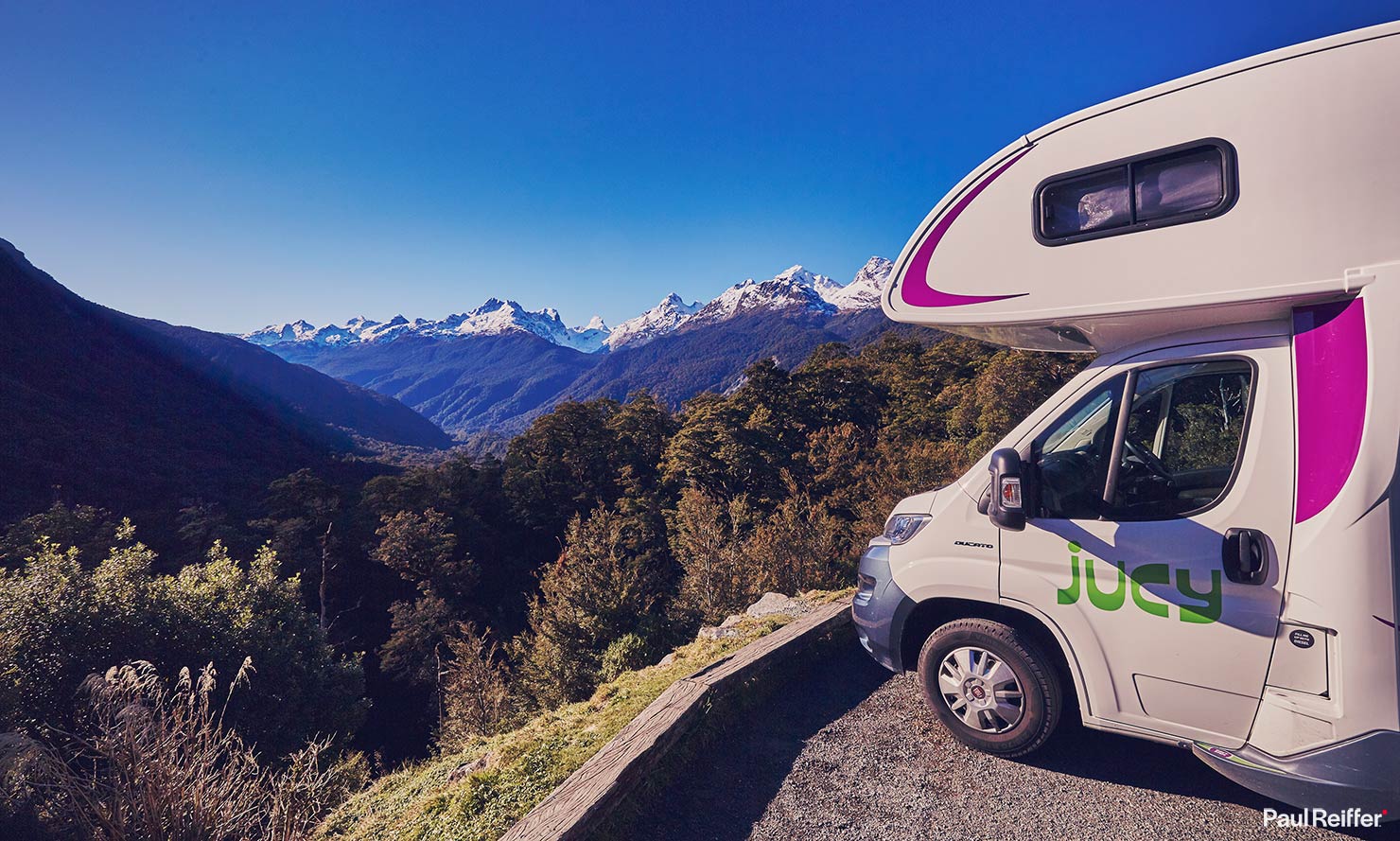
With a campervan, one other advantage you have is the ability to stop (almost) anywhere if needed, and just take in the scenery for a while – rain or shine, the views around the Fiordland area are stunning in every direction.

Along the way, you’ll find amazing reflections in the rivers and lakes, such as Lake Gunn, with snow-capped mountains against blue skies if you get your timing just right.
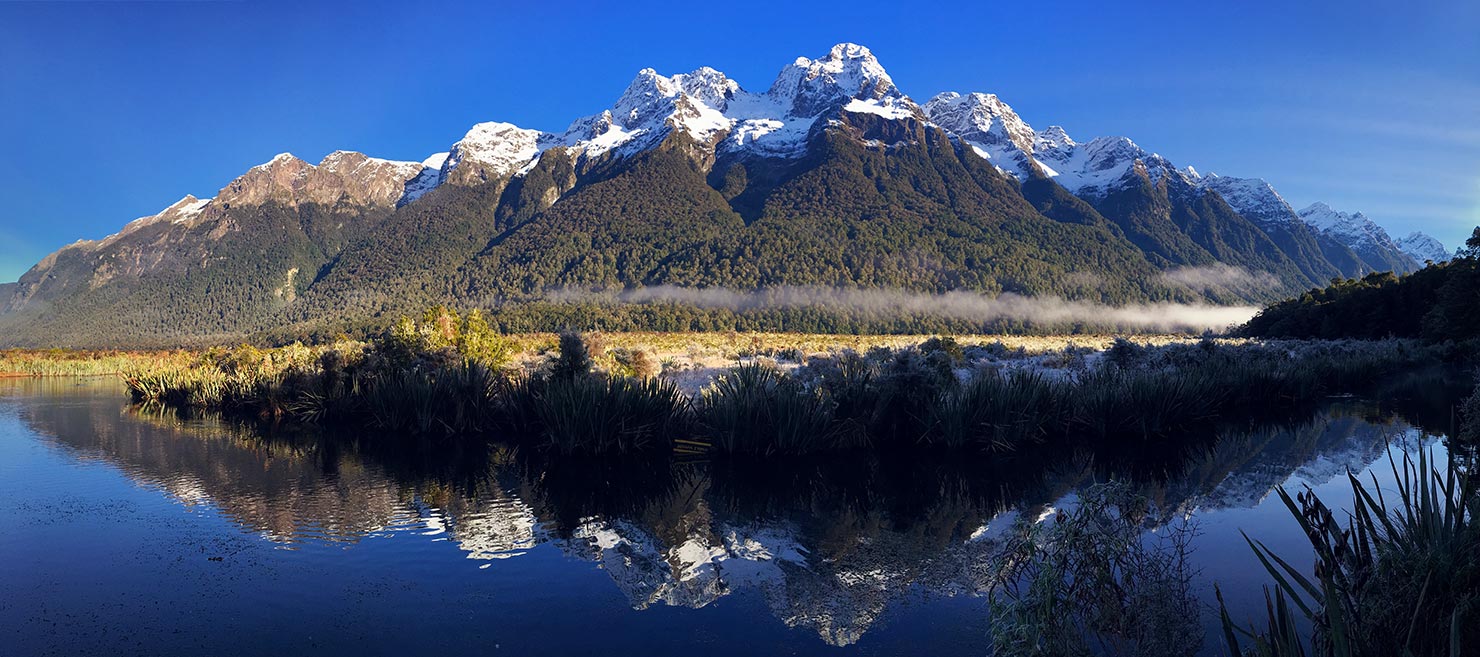
DO be careful of the sandflies. I’ve seen people using face nets here, and even though I know it’s not 100% effective, the application of insect repellent does at least seem to have some effect on the volume of flies that will want to explore you and your kit.
(No, that’s not a suggestion to spray your camera with insect repellent – but being near to it with some on your person does seem to keep at least 20% of them away.)
DO keep an eye on the tide. It can creep up on you, and the beach area has certain places where you’ll find yourself isolated from a dry route back to shore if you’re not careful. With the rapid flow of tidal water, the shallow “beach” of Milford Sound can be gone in a matter of minutes, so knowing when to cut and run becomes quite an art over the years! You have been warned.
DON’T be surprised if wildlife finds you interesting – like this family of ducks who came over to us and set up camp. Equally, give them their space, and don’t interfere.
And finally…

DON’T, ever, ever, ever, ever, do as we saw this couple of campers do when we got to the car park one afternoon – leaving their food trash “hidden” under their car because it smelled bad inside.
Remember those Keas?
Yeah, as well as rubber, they also seem to like muesli bars – and the plastic that surrounds them.
Seriously, people, can we please take some care when it comes to looking after the wildlife we’re so keen to see?
